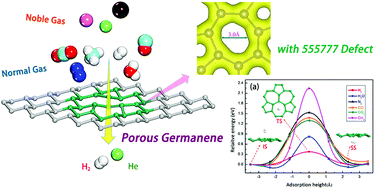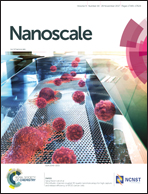Porous germanene as a highly efficient gas separation membrane†
Abstract
Using a gas separation membrane as a simple gas separation device has an obvious advantage because of the low energy consumption and pollution-free manufacturing. The first-principles calculations used in this work show that germanene with its divacancy is an excellent material for use as a hydrogen (H2) and helium (He) separation membrane, and that it displays an even better competitive advantage than porous graphene and porous silicene. Porous germanene with its divacancy is chemically inert to gas molecules, because it lacks additional atoms to protect the edged dangling germanium atoms in defects, and thus shows great advantages for gas separation over previously prepared graphene. The energy barriers to H2 and He penetrating porous germanene are quite low, and the permeabilities to H2 and He are high. Furthermore, the selectivities of porous germanene for H2 and He relative to other gas molecules are high, up to 1031 and 1027, respectively, which are superior to those of porous graphene (1023) and porous silicene (1013); thus the separation efficiency of porous germanene is much higher than that of porous graphene and porous silicene. Therefore, germanene is a favorable candidate as a gas separation membrane material. At the same time, the successful synthesis of germanene in the laboratory means that it is possible to use it in real applications.



 Please wait while we load your content...
Please wait while we load your content...